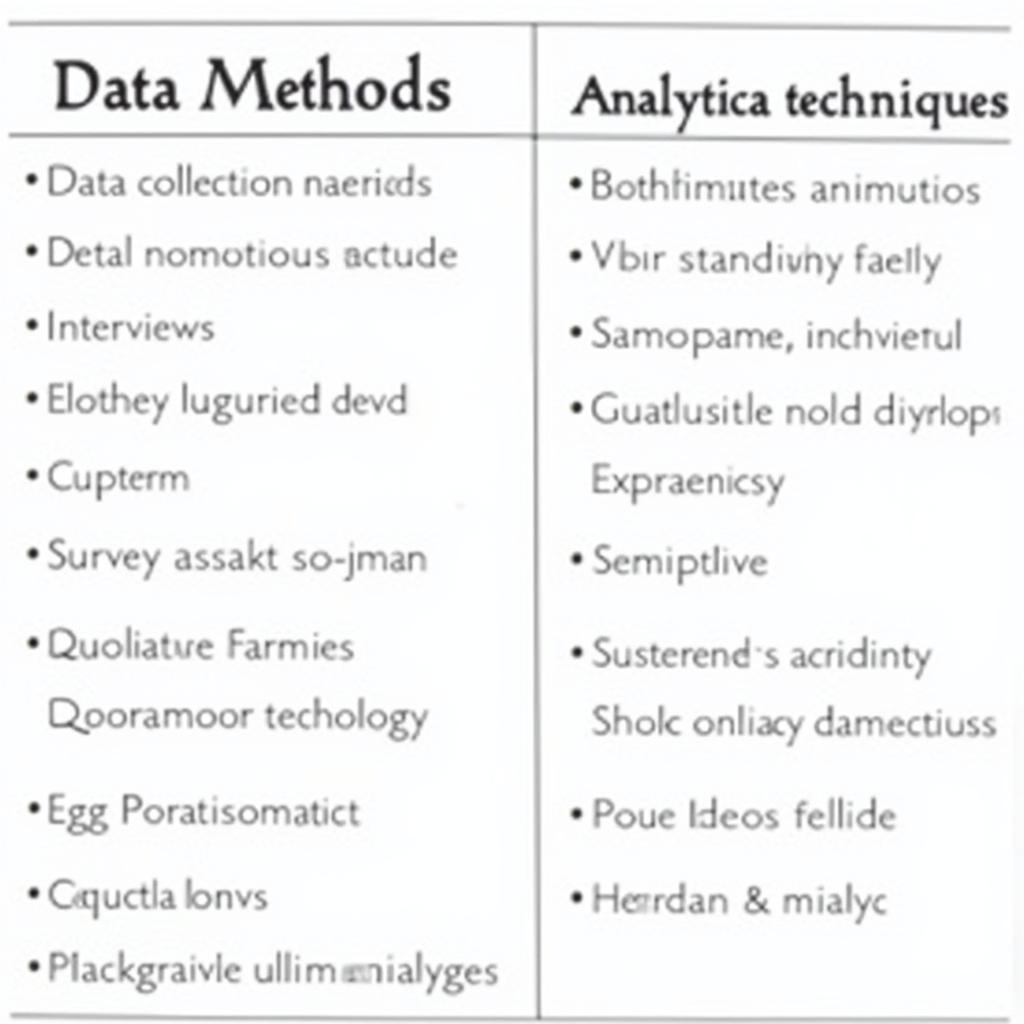Designing and conducting mixed methods research, as detailed by Creswell, offers a powerful approach to understanding complex phenomena. This approach integrates both qualitative and quantitative methods, providing a more holistic and nuanced perspective than either method alone. This guide explores the intricacies of designing and conducting mixed methods research, drawing upon Creswell’s influential work.
Understanding the Core Principles of Designing and Conducting Mixed Methods Research
Creswell emphasizes the importance of a well-defined research question that necessitates the use of both qualitative and quantitative methods. Choosing the right mixed methods design hinges on the research question and the desired balance between qualitative and quantitative strands. Are you prioritizing one over the other, or are they equally important? This decision impacts the sequencing and weighting of each method. For instance, a sequential explanatory design prioritizes quantitative data collection, followed by qualitative data to explain the initial findings. Conversely, a sequential exploratory design begins with qualitative exploration, which informs the subsequent quantitative phase.
Several key decisions shape the mixed methods research process. The timing of data collection—concurrent or sequential—and the weighting assigned to each data type are crucial. Furthermore, the methods of integration, which range from merging datasets to connecting findings through narrative, significantly influence the overall interpretation. Creswell advocates for a clear rationale behind these decisions, ensuring alignment with the research goals.
Practical Steps in Conducting Mixed Methods Research with Creswell’s Framework
Creswell and Creswell research design provides a practical framework for navigating the complexities of mixed methods research. Start by clearly articulating the research problem and formulating a compelling rationale for adopting a mixed methods approach. This justification should demonstrate how the integration of qualitative and quantitative data will yield richer insights than either method alone.
Next, select the appropriate mixed methods design, considering the research question and the desired interplay between qualitative and quantitative strands. Develop detailed data collection and analysis plans for both qualitative and quantitative components, ensuring rigor and validity in each. Specify the sampling strategies, data collection instruments, and analytical procedures for both strands.
 Data Collection and Analysis in Mixed Methods Research
Data Collection and Analysis in Mixed Methods Research
The integration phase, a hallmark of mixed methods research, involves combining the qualitative and quantitative findings. This process can involve merging datasets, connecting findings narratively, or transforming data from one form to another. Finally, interpret the integrated findings, drawing on the strengths of both data types to provide a comprehensive and nuanced understanding of the research problem.
Navigating Challenges in Mixed Methods Research
While mixed methods research offers significant advantages, it also presents unique challenges. One common hurdle is the time and resource commitment required to collect and analyze both qualitative and quantitative data. Researchers must possess expertise in both methodological paradigms, which can be demanding.
Another challenge lies in integrating diverse data types and interpreting the combined findings. Developing a clear integration strategy and ensuring consistency in interpretation are crucial for overcoming this obstacle. Creswell’s work offers valuable guidance on navigating these challenges, emphasizing the importance of meticulous planning, rigorous execution, and thoughtful interpretation.
Conclusion: Embracing the Power of Mixed Methods Research
Designing and conducting mixed methods research using Creswell’s framework provides a powerful approach to investigating complex research questions. By integrating qualitative and quantitative methods, researchers can achieve a deeper and more holistic understanding of the phenomenon under study. While challenges exist, careful planning and execution, guided by Creswell’s expertise, can lead to impactful and insightful research.
FAQs
- What is the primary advantage of using a mixed methods approach?
- What are the different types of mixed methods designs?
- How do I choose the right mixed methods design for my research?
- What are some common challenges in conducting mixed methods research?
- How can I integrate qualitative and quantitative data effectively?
- Where can I find more resources on mixed methods research by Creswell?
- What are some examples of successful mixed methods studies?
If you’re interested in learning more about research design, you might find our articles on educational research john creswell and creswell and creswell research design helpful. You can also explore various psychology research topics questions for inspiration.
When needing assistance, please contact us at Phone Number: 0904826292, Email: research@gmail.com, or visit our office at No. 31, Alley 142/7, P. Phú Viên, Bồ Đề, Long Biên, Hà Nội, Việt Nam. Our customer service team is available 24/7.